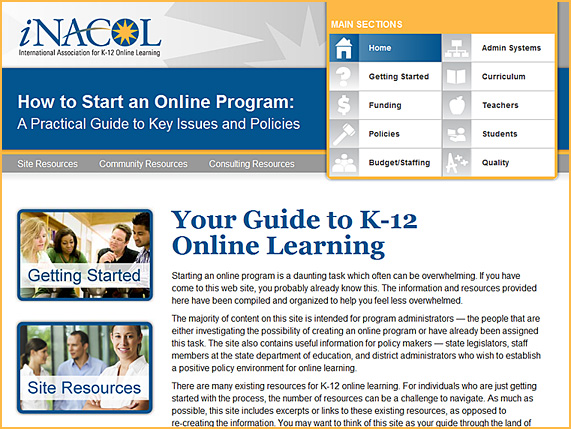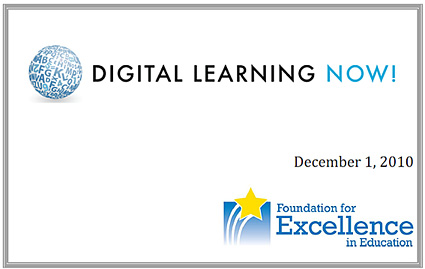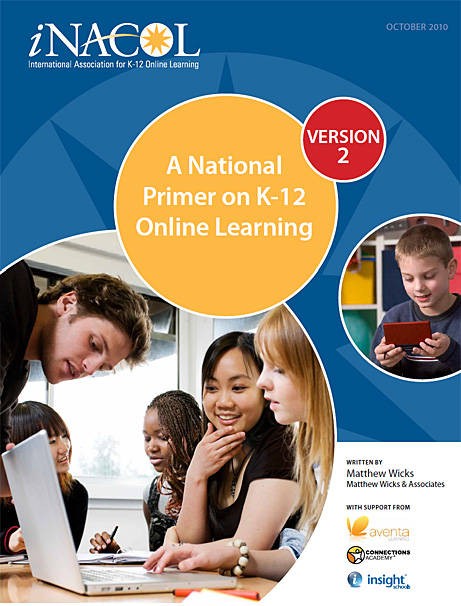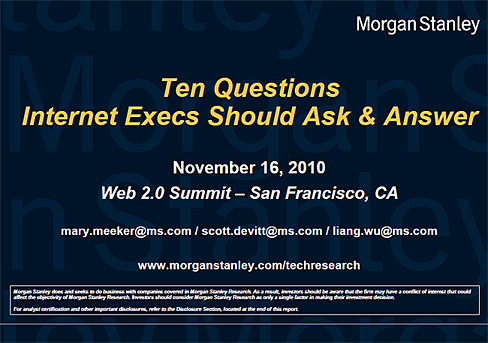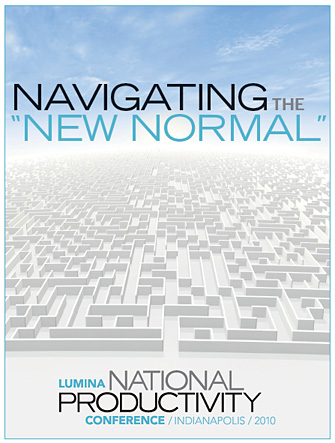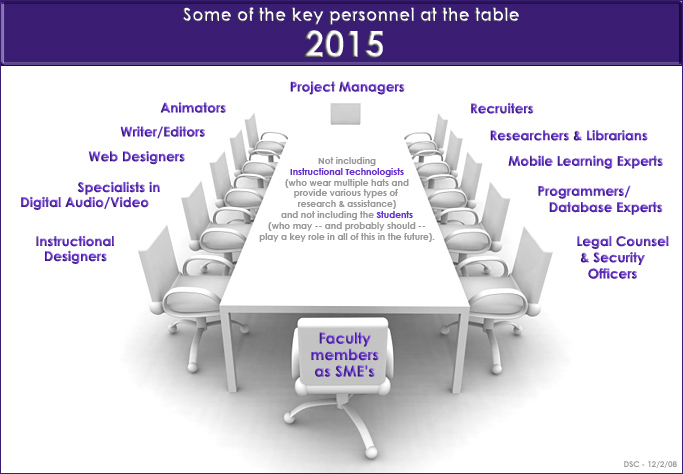Enrollment in online courses increases at the highest rate ever — from The Chronicle by Travis Kaya
Despite predictions that the growth of online education would begin to level off, colleges reported the highest-ever annual increase in online enrollment—more than 21 percent—last year, according to a report on an annual survey of 2,600 higher-education institutions from the Sloan Consortium and the Babson Survey Research Group.
In fall 2009, colleges—including public, nonprofit private, and for-profit private institutions—reported that one million more students were enrolled in at least one Web-based course, bringing the total number of online students to 5.6 million. That unexpected increase—which topped the previous year’s 17-percent rise—may have been helped by higher demand for education in a rocky economy and an uptick in the number of colleges adopting online courses.
— resource from StraighterLine.com’s blog
.
CONCLUSION: THE IMPERATIVE FOR CHANGE
After centuries of excellence and decades of cyclical recessions, higher education has developed some bad habits. When facing budget shortfalls, colleges and universities have not always adequately addressed underlying cost drivers and have instead pursued short-term solutions. Today, the need for fundamental changes is inescapable. The demand for highly skilled workers is unavoidable, the economic effects of a better-educated nation unequivocal—the United States needs more college-educated workers than ever.
A half century ago, higher education helped transform America’s World War II fighting force into a powerful labor force. In unpredicted and unprecedented ways, colleges and universities expanded and met the challenge of educating millions of returning GIs. They responded with heart and innovation. Today, higher education faces another challenge. The road ahead can become a deep plunge into a fiscal morass, a financing disaster that results in severely limited opportunity — or it can become an invigorating time of innovation, strategic cutting and reinvestment, with a laser focus on student completion. Through your leadership, we can work together to reinvent higher education and ensure continued progress toward the Big Goal.
From DSC:
I have it that higher education has reached the point where we need teams of specialists to create and deliver the content. (This is probably also true for K-12 as well.) If we want to engage the (already developing) new type of student these days, things have become far too complex for one person to do it all anymore.
- You don’t walk into a hospital and only see one type of doctor listed there.
- You don’t see only one person’s name who was responsible for building that spectacular new building on your campus.
- The credits at the end of any major motion picture don’t show one person’s name.
- The list goes on and on.
Often, for complex endeavors, we need teams of people.
To be fair…given that we use textbooks created by publishers, I suppose that we already employ teams of people to a significant extent…but it is not enough…at least not yet. This point was brought home to me again while reviewing the article, Online Education: Budgets, Leadership Changes Drive Restructuring by David Nagel. David states that “the vast majority of online program managers claimed in a recent survey that faculty resistance is a significant hindrance to the expansion of their online education programs.”
This should not come as a surprise for several reasons (at least):
1) Faculty may not have taken a course online themselves yet. They may not have personally experienced this manner of teaching and learning. They may not have seen how effective it can be (if it’s done well and properly).
2) Secondly, it must be very difficult to invite other people to the table or to let others bring their chairs up to the table.
3) Thirdly, and more of my focus here, is that learning how to teach online is a new ball game — requiring a variety of skills and interests — of which few have all of the skills and interests involved and none have all of the necessary time required. Teaching an effective online course requires a great deal of time and work to understand what’s possible in that particular teaching and learning environment, and which tools to use when, and to pull together the resources needed to create effective, engaging, multimedia-based online-based materials for the first time. Heck, we instructional technologists struggle to keep up here, and it’s but one piece of the puzzle.
The problem is, with this new environment, a whole new set of skills are necessary, as captured in this graphic I created a while back:
In citing why restructurings are so prevalent, the following caught my eye:
- Most (59 percent) cited budget issues, while 38 percent also cited coordination of instructional resources as factors
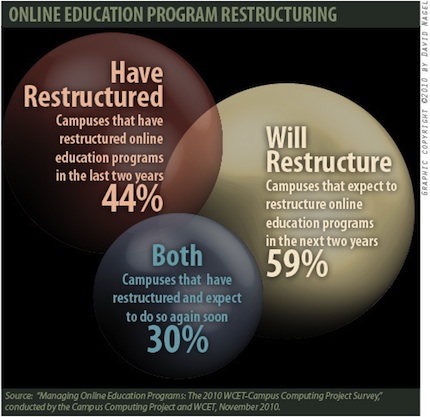
.
Now that “coordination of instructional resources” probably covers a variety of needs, requirements, and goals. But one of those goals/needs, at least in my mind and based upon my experience, is the need to create a team of specialists.
No longer can we expect to be able to put everything on the plate of one person. Because rare will that faculty member be who has the all the new prerequisite interests and abilities and software and hardware. And if they are that good, they won’t have the time to do it all anyway.
The Data Analytics Boom — from Forbes.com by John Jordan
A multitude of converging facts has given rise to numbers-based decision-making.
5 things Netflix streaming can teach higher ed — by Joshua Kim
1. Replace Yourself:
Where can we replace ourselves in higher ed, before someone else does it for us?
2. Service Tomorrow:
Do we have a good idea how education will be constructed, delivered and consumed in the future?
3. Experience, Not Technology:
How can we in higher ed focus on the experience of learning, as opposed to the delivery mechanism?
4. Be Fearless:
How can we be more fearless in higher ed, and be willing to take risks for our students?
5. Design For Your Customer:
Are we in higher ed offering enough choices for how our students’ want to consume and participate in learning?
Patterns emerge over time — from Harold Jarche
Andrew Cerniglia has an excellent article that weaves complexity, cynefin and the classroom together. It is worth the read for anyone in the teaching profession. I became interested in complexity as I moved outside the institutional/corporate walls and was able to reflect more on how our systems work. The observation that simple work is being automated and complicated work is being outsourced seems rather obvious to me now. Complex work that has increasing market value in developed countries and that is where the future lies. However, our schooling, training and job structures do not support this.
Cerniglia explains how complex the classroom can be, when we factor in the outside that touches each student daily…
Also see:
5 lessons from outgoing Microsoft software architect Ray Ozzie — from Fast Company by E.B. Boyd
From DSC:
Key quotes that directly relate to those of us in higher education:
1. Take time to paint a vision of the future
2. Put past successes “in perspective”
Once a company has done something well, it’s easy to keep doing that thing. In fact, it’s hard to stop doing it, because your company–its structure and incentives–get organized around enabling that successful thing to keep happening. But if the bigger picture in your industry changes, as it is in the tech sector, that successful thing may no longer be optimized to the new environment. Continuing to do it (from DSC: i.e. the status quo), and not shifting to a product line better suited to the new landscape, will put you at a disadvantage against competitors who do adapt, not to mention new entrants who have designed themselves with the new needs front of mind.
…
“This will absolutely be a time of great opportunity for those who put past technologies & successes into perspective,” Ozzie writes, “and envision all the transformational value that can be offered moving forward.”
3. Recognize what’s inevitable in your industry
The flip side of putting past successes in perspective is recognizing what new developments are inevitable. The news industry, for example, spent a lot of time fighting the Web and digital news before finally accepting their inevitability. Think of how much energy would have been saved–and, more, put to better use–had the industry sought to dive into the digital world, rather than fight it.
4. “Inevitable” is not the same as “imminent”
5. Real transformation has to come from within
Also relevant here:
- Dawn of a New Day by Ray Ozzie (Oct 2010) — for his look at what’s coming down the pike and
- Ray’s memo from 2005 entitled, The Internet Services Disruption









